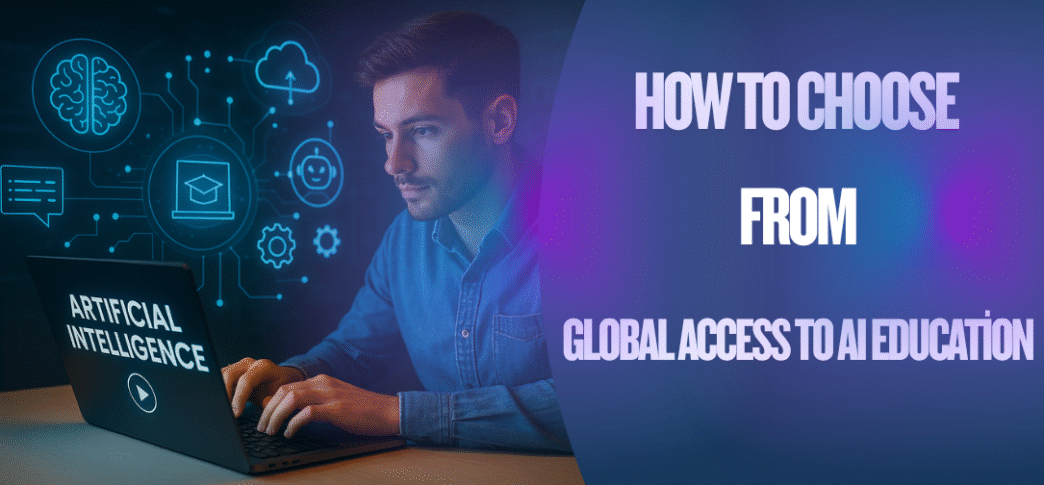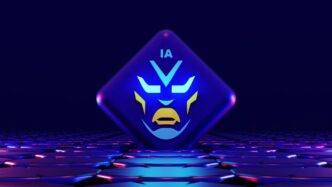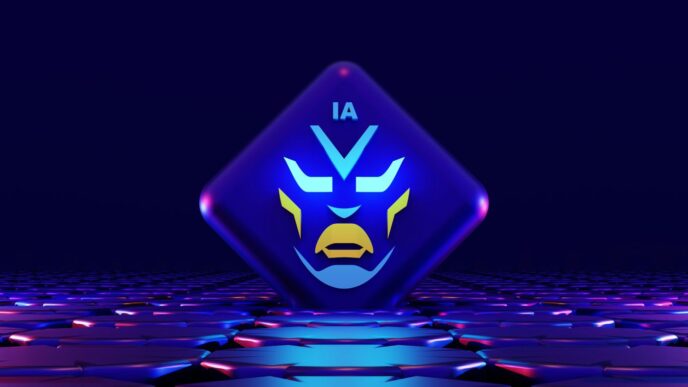Looking to explore the Top Free AI Courses for 2025 without breaking the bank in 2025? You are in luck! MIT collaborations and other foremost tech innovators offer a variety of free courses that can get you up to speed. Whether you’re a total beginner or looking to refine specific skills, there’s something here for everyone.
We have rounded up some of the top free AI courses for 2025 from trusted providers such as DeepLearning.AI, IBM, Google, Microsoft, and Udemy. These programs make it easier than ever to learn practical AI concepts, boost your skills, and explore how artificial intelligence is reshaping industries — all without spending a dime.
Key Takeaways
- DeepLearning.AI offers several free courses covering ChatGPT prompt engineering, debugging generative AI models, and using large language models (LLMs) for semantic search.
- IBM’s SkillsBuild provides free AI Fundamentals training, including real-world examples and a module on AI ethics.
- Google, in collaboration with MIT, runs a short free course on Generative AI for Educators, designed to help teachers integrate AI responsibly in the classroom.
- Microsoft offers multiple free AI learning resources, from AI Adventurers with Minecraft Education to AI for Organisational Leaders and GitHub Copilot training.
- Udemy features free and beginner-friendly AI courses, such as the ChatGPT Masterclass, helping learners go from basics to expert-level usage.
1. DeepLearning.AI ChatGPT Prompt Engineering for Developers

So, you’ve been playing around with ChatGPT, right? It’s pretty neat, but what if you want to actually use that power in your own projects? That’s where this course comes in. It’s all about moving beyond just typing questions into a chat window and learning how to make Large Language Models (LLMs) like ChatGPT work for you through their API. This is your chance to learn how to build your own custom chatbots and integrate AI into your applications.
Think of it like this: instead of just asking for directions, you’re learning how to build the GPS system itself. You’ll get hands-on with how to structure your requests to the AI so it gives you exactly what you need, which is a bit different from just chatting.
Here’s a peek at what you’ll cover:
- Understanding the API: How to actually talk to the AI model programmatically.
- Crafting Effective Prompts: Learning the art of writing instructions that get the best results.
- Building Applications: Putting it all together to create something useful, like a chatbot.
- Working with LLMs: Getting familiar with how these models process information and generate responses.
It’s a great way to see how developers can really start using these powerful AI tools in practical ways. If you’re curious about the technical side of making AI do your bidding, this is a solid place to start.
2. DeepLearning.AI Evaluating and Debugging Generative AI Models Using Weights and Biases
So, you’ve built a generative AI model. That’s cool. But how do you know if it’s actually any good? Or, more importantly, how do you fix it when it goes sideways? This course from DeepLearning.AI, in partnership with Weights & Biases, tackles exactly that. It’s all about the practical side of making sure your AI models are working right and how to track their performance over time. Think of it as the quality control for your AI projects.
You’ll learn how to use tools to manage, version, debug, and experiment with your machine learning workflows. This isn’t just about building something that works once; it’s about building models you can trust and improve. It covers the nuts and bolts of MLOps, which is basically the set of practices that helps you manage the whole lifecycle of your AI models.
Here’s a peek at what you can expect:
- Tracking Experiments: Keep a record of all the different versions of your model and what happened during training. This is super helpful when you need to go back and see what worked and what didn’t.
- Visualizing Performance: See how your model is doing with charts and graphs. It makes it way easier to spot trends or problems than just looking at raw numbers.
- Debugging Models: When your AI starts acting weird, you need ways to figure out why. This course shows you how to pinpoint issues and fix them.
- Reproducibility: Make sure you can get the same results again. This is key for reliable AI development.
If you’re building any kind of AI application, especially if you’re looking into things like developing production-ready RAG applications, knowing how to properly evaluate and debug your models is a big deal. It saves you a lot of headaches down the line and helps you build better AI.
3. DeepLearning.AI Large Language Models with Semantic Search

This course from DeepLearning.AI really gets into how to make large language models (LLMs) actually useful for searching through information. It’s not just about asking a question and getting an answer; it’s about building systems where the LLM can find the most relevant stuff and then present it clearly. Think about it like this: you have a massive pile of documents, and you need to find specific facts or summaries. This course teaches you how to set up a system that can do that efficiently.
The core idea is using semantic search to make LLMs smarter about finding information. Instead of just matching keywords, semantic search understands the meaning behind words and phrases. This means you can ask questions in a more natural way, and the system will still figure out what you’re looking for.
Here’s a breakdown of what you’ll cover:
- Understanding LLMs: You’ll learn the basics of how LLMs work, especially how they predict the next word in a sequence. This is key to understanding their capabilities.
- Semantic Search Techniques: This involves looking at how to represent text in a way that computers can understand its meaning. It’s all about turning words into numbers that capture their context.
- Retrieval-Augmented Generation (RAG): This is a big one. RAG combines the power of LLMs with external knowledge bases. So, the LLM doesn’t just rely on what it was trained on; it can go out and find current or specific information before it answers your question. This makes the answers much more accurate and up-to-date.
- Summarizing Results: Once the system finds relevant information, the course shows you how to use LLMs to summarize those findings into concise and easy-to-understand answers. This is super helpful for quickly getting the gist of a lot of text.
It’s a practical course that shows you how to build better search tools and information retrieval systems using the latest AI tech. If you’re working with lots of data and need to make it more accessible, this is a good place to start.
4. IBM SkillsBuild AI Fundamentals
IBM’s SkillsBuild program offers a free pathway into the world of artificial intelligence, and their AI Fundamentals credential is a great place to start. It’s designed for folks who might not have a technical background but want to get a handle on what AI is all about and how it’s used. You’ll go through about six different courses, and it takes roughly ten hours to complete.
One of the standout parts is the AI Ethics module. It’s about an hour and 45 minutes long and uses real examples to explain why ethics are so important when building AI systems that people can trust. It’s not just about the tech; it’s about making sure it’s used responsibly.
This program covers a good range of topics, including:
- Artificial Intelligence basics
- Machine Learning concepts
- Deep Learning introductions
- Generative AI principles
- Data Analysis fundamentals
When you finish, you get a credential you can add to your LinkedIn profile, which is a nice little bonus. It’s a solid way to get your feet wet in AI without any cost. The enrollment period for this event was from September 22nd to October 10th, with orientation sessions held on September 29th, October 6th, and October 13th. You can find more details about the program on the IBM SkillsBuild website.
5. Google Generative AI for Educators
This course, developed with MIT’s Responsible AI for Social Empowerment and Education, is a quick, two-hour program. It’s designed to help teachers get up to speed on generative AI and figure out how they might use it in their classrooms. Generative AI presents a real challenge in education because while it can be a fantastic tool for both students and teachers, it also makes it way too easy for students to just copy answers for their assignments. So, a course that helps teachers understand these issues is pretty important.
Upon completion, you’ll receive a professional development certificate, and the best part is, it’s completely free.
Here’s a quick look at what you might cover:
- Foundational Concepts: Learn about the origins of generative AI and the basic ideas behind how it creates new data. This includes looking at large language models and some basic prompt engineering.
- Real-World Applications: Explore how generative AI can be used in business, like using Retrieval-Augmented Generation (RAG) to make AI responses more accurate or Agentic AI for tasks that need a bit of autonomy.
- Ethics and Responsibility: Understand the importance of developing AI systems responsibly. This involves looking at the whole AI lifecycle, dealing with bias, and thinking about privacy concerns.
6. Microsoft AI Adventurers: A Minecraft Education Presentation
Microsoft has a pretty neat way to introduce younger folks to the world of AI, and it’s through a presentation called ‘AI Adventurers’ that uses Minecraft Education. It’s a fun approach, honestly. Instead of just talking about complex ideas, they use a game that many kids already know and love.
This presentation is designed to give a basic rundown of generative AI. Think of it as a first step, a gentle introduction. It aims to make AI concepts accessible and engaging for students. They use the familiar Minecraft environment to illustrate how AI can be used, which is a smart move. It helps demystify what AI is and what it can do without getting too technical.
Here’s what you can expect from this kind of introduction:
- What is AI? Simple explanations of artificial intelligence.
- Generative AI Basics: How AI can create new things, like text or images.
- AI in Games: How AI is already part of the games we play.
- Creative Uses: Ideas on how AI can help with school projects or creative tasks.
It’s a good starting point for anyone curious about AI, especially if you’re looking for a way to explain it to kids. It’s part of Microsoft’s broader effort to make AI education available, and you can find more about their initiatives through their AI for Educators programs. It’s a nice change of pace from more traditional learning methods.
7. Microsoft Building Applications with GitHub Copilot Agent Mode
So, Microsoft has this thing called GitHub Copilot, and they’ve added this new ‘agent mode’. It’s pretty neat if you’re into building apps. Basically, it’s like having a coding assistant that can do more than just suggest code. This mode lets Copilot act more like an agent, understanding your project’s context and helping you with bigger tasks. Think of it as a step up from just auto-completing lines of code. It can help you plan out features, debug issues, and even generate boilerplate code based on your descriptions.
This course, which is a YouTube video, walks you through how to actually use this agent mode. It’s not super long, but it gets into the practical side of things. You’ll see how to set it up and what kind of commands or prompts work best to get it to do what you want.
Here’s a quick rundown of what you might learn:
- How to activate and configure GitHub Copilot’s agent mode.
- Using agent mode for more complex coding tasks, like feature development.
- Troubleshooting common issues when working with AI coding assistants.
- Understanding the context window and how it helps the agent.
It’s a good way to see how AI is changing the way we build software, making things faster and maybe even a bit easier. If you’re already using Copilot or thinking about it, checking out this video is a good idea to see what the latest features can do for you.
8. Microsoft AI for Organizational Leaders
This course from Microsoft is designed for leaders who want to get a handle on what AI can do for their organizations, without needing to be a tech wizard. It’s about understanding the big picture and how to use AI to make smart business moves. You’ll learn about the history of AI, how it fits into different companies, and how data plays a part. Plus, it covers how to actually build AI products that can help your business grow and work better.
Key topics you’ll explore include:
- The current AI landscape and its history.
- How people, organizations, and data interact with AI.
- Managing data operations within a company.
- Strategies for creating AI products that drive innovation.
The program aims to equip leaders with the knowledge to guide AI initiatives and make informed decisions. It’s a good starting point if you’re curious about AI’s potential but aren’t sure where to begin. You won’t be writing code, but you will be thinking strategically about how AI can be a tool for your team.
9. Udemy ChatGPT Masterclass: ChatGPT Guide for Beginners to Experts!
So, you’ve heard about ChatGPT and maybe even played around with it a bit. But what if you want to go from just messing around to actually making it work for you, like, really work? That’s where a course like the ‘ChatGPT Masterclass: ChatGPT Guide for Beginners to Experts!’ on Udemy comes in. It’s designed to take you from knowing next to nothing about ChatGPT to being able to use it like a pro.
This isn’t just about typing in a few questions and getting answers. The idea is to learn how to get high-quality content out of it and, if you’re looking to make some extra cash, how to potentially grow your earnings. Think of it as learning a new skill that could actually pay off.
Here’s a peek at what you might get out of a course like this:
- Getting a solid grasp on how ChatGPT works, beyond just the surface level.
- Learning techniques to produce content that’s actually good, not just random text.
- Figuring out how to use ChatGPT in ways that could help you make money, whether that’s through freelance work or other projects.
- Understanding the ethical side of using AI, which is pretty important these days.
Udemy has a ton of courses, and sometimes the quality can be a bit hit or miss because different people create them. But with this kind of masterclass, you’re usually looking at a structured path to learn the ins and outs. They often have a subscription plan that gives you access to a lot of courses for a monthly fee, which can be a good deal if you plan on taking more than one. It’s a practical way to get up to speed on a tool that’s changing how we do a lot of things.
Wrapping Up Your AI Learning Journey
So, that’s a look at some of the free AI courses you can take from MIT and other places in 2025. It’s pretty amazing how much you can learn without spending a dime. Whether you’re just curious about AI or looking to build some serious skills, these programs offer a solid starting point. Don’t just read about it; jump in and try a few. You might surprise yourself with what you can do. Plus, getting a certificate from a place like MIT, even for a free course, looks good on a resume. It’s a smart move for anyone wanting to get ahead in today’s tech world.
Frequently Asked Questions
What is the main goal of these free AI courses?
These courses are designed to help you learn about artificial intelligence and machine learning without costing you any money. They cover everything from basic ideas to more advanced topics, helping you understand and even use AI tools.
Do I need to be a coding expert to take these courses?
Not at all! Many of these courses are made for beginners and don’t require any coding knowledge. Some even focus on ‘no-code’ ways to use AI, meaning you can build cool AI projects without writing a single line of code.
Can I get a certificate after finishing a course?
Some courses offer certificates of completion, which can be great for showing off your new skills. While the courses themselves are free to take, sometimes there’s a small fee if you want to get an official certificate.
How long do these courses usually take?
The time it takes to finish a course can differ. Some are short, like a couple of hours, perfect for a quick learning session. Others are longer, maybe a few weeks, to cover more complex subjects in detail.
Are these courses suitable for people working in different jobs?
Yes! Whether you’re a student, a teacher, a business leader, or someone just curious about AI, there’s likely a course for you. They cover topics relevant to many different careers and everyday uses of AI.
Where can I find these free AI courses?
The article lists several great places to find these free courses, including MIT Professional Education, DeepLearning.AI, IBM SkillsBuild, Google, and Microsoft. You can explore their offerings to find the ones that best fit what you want to learn.














